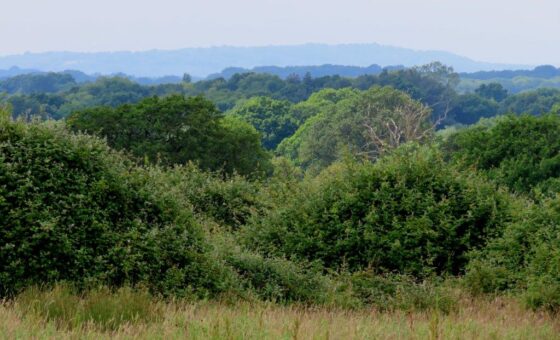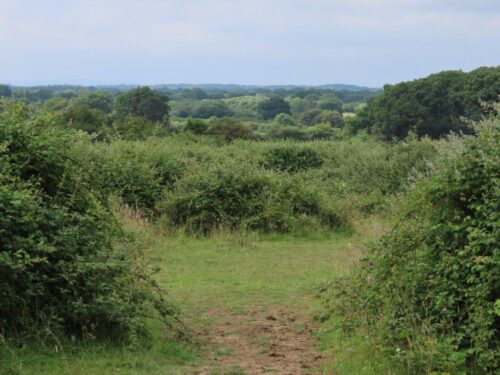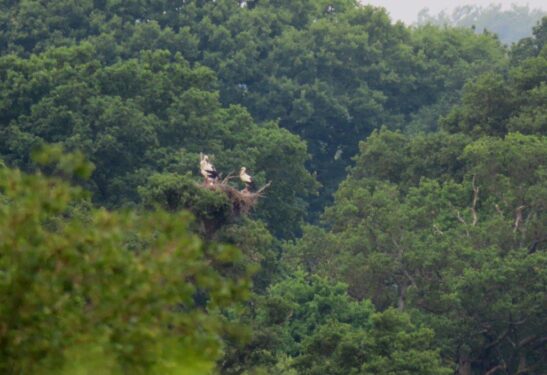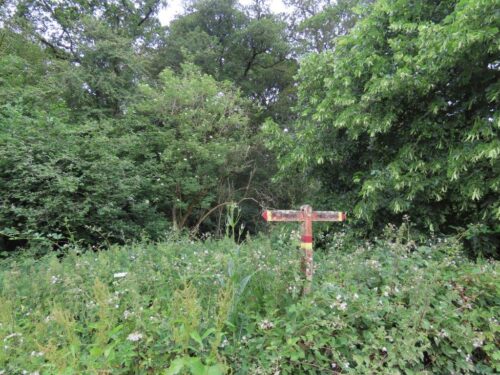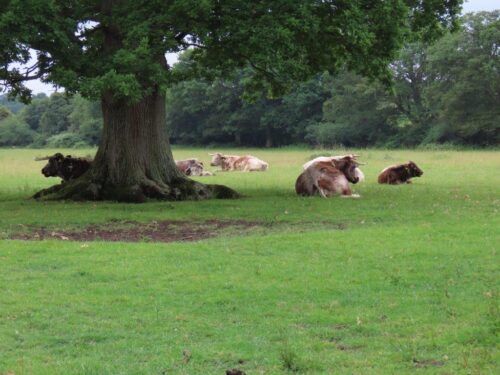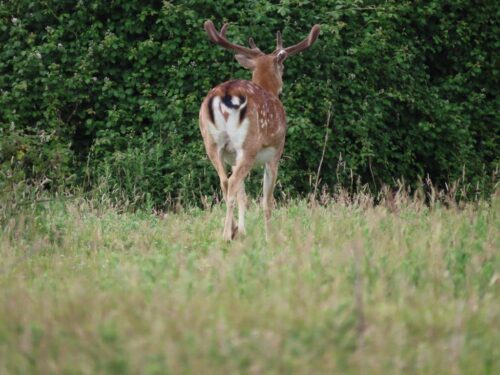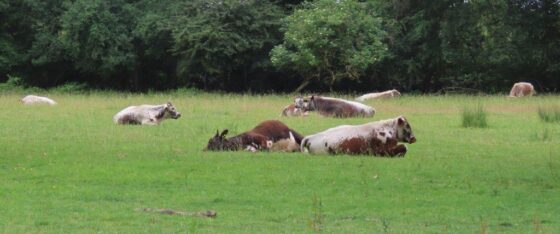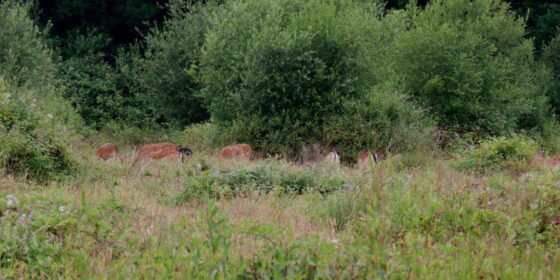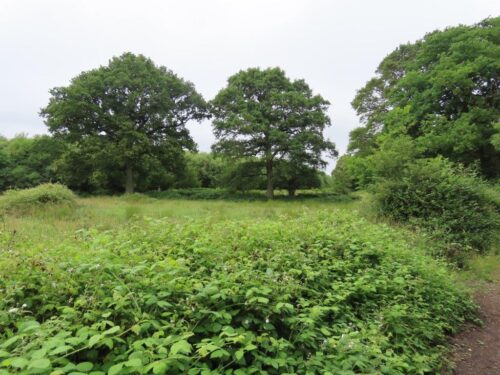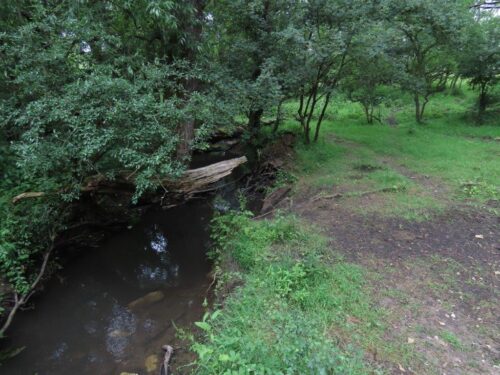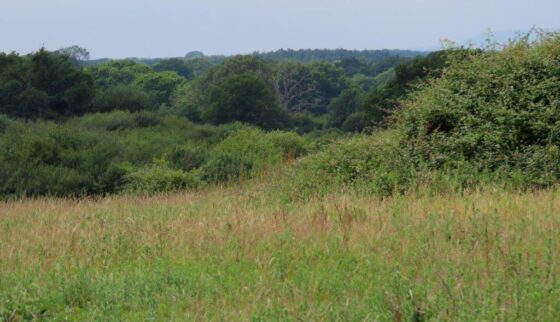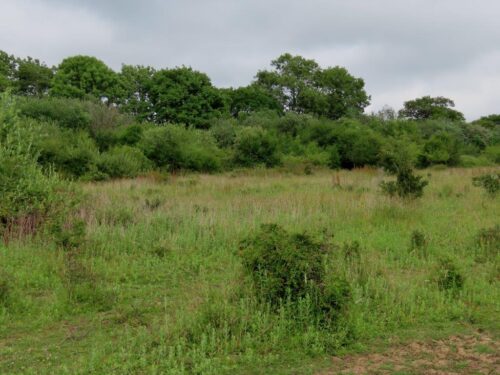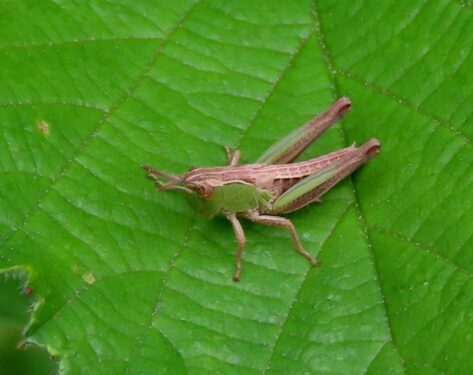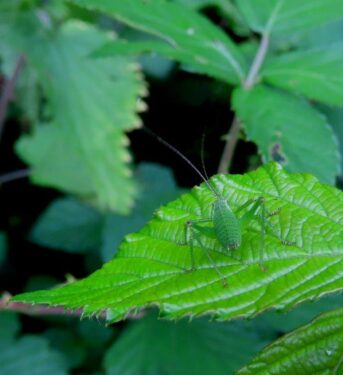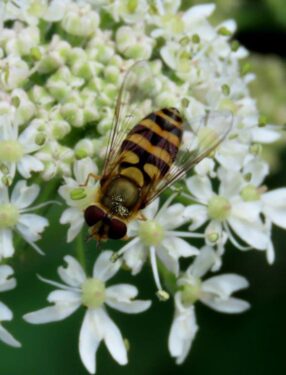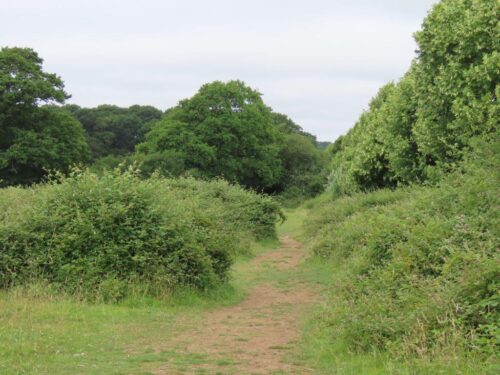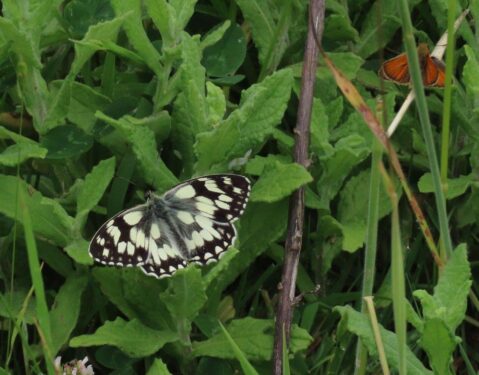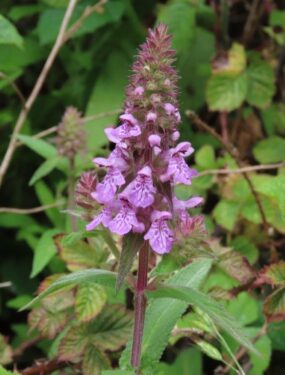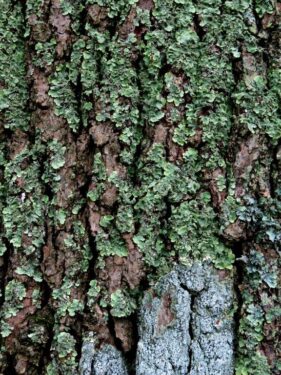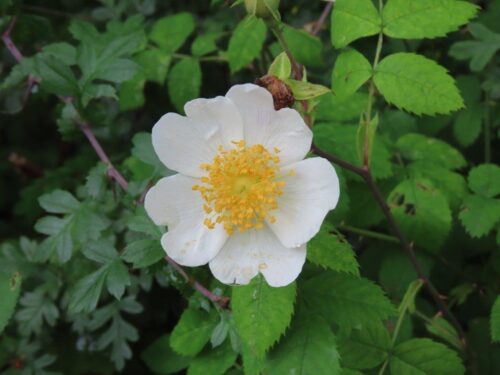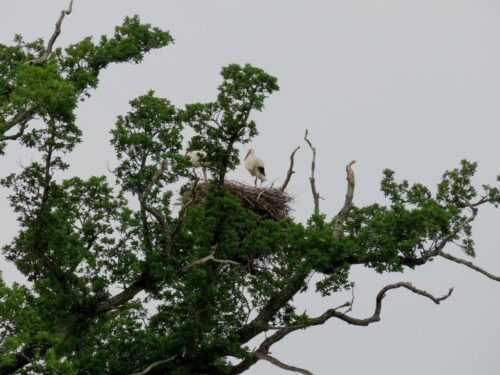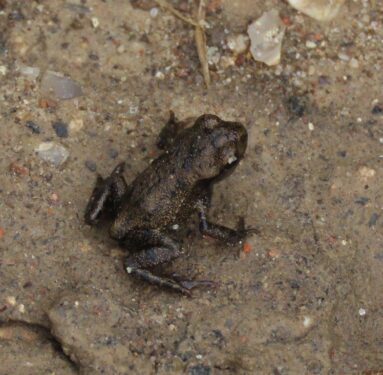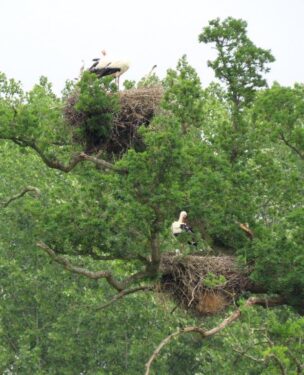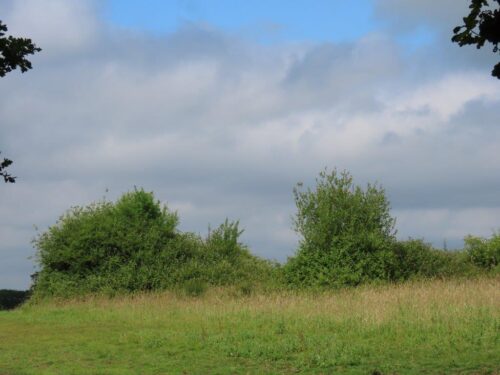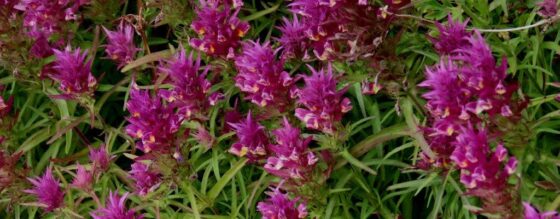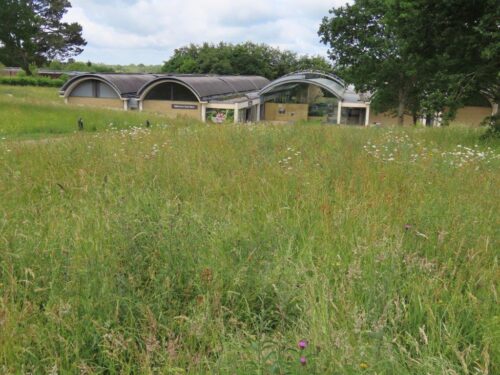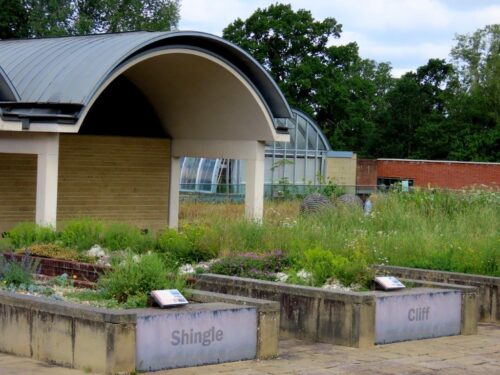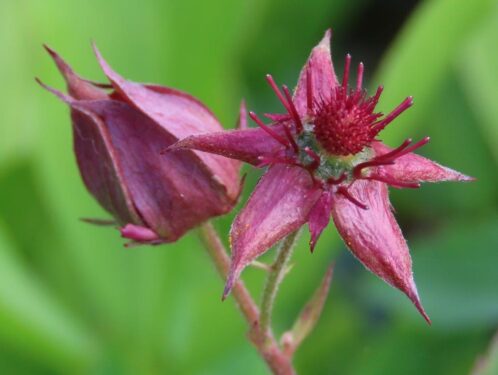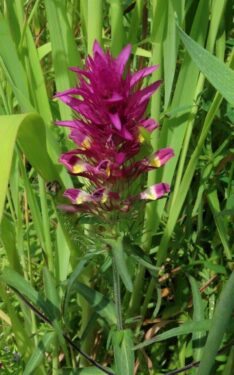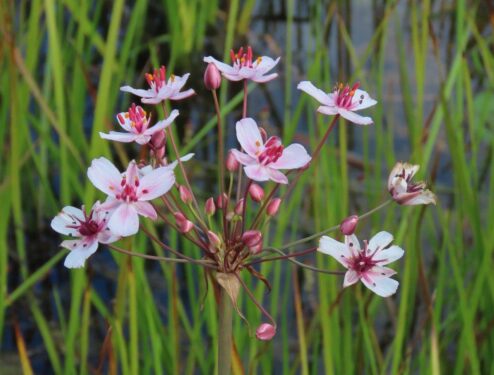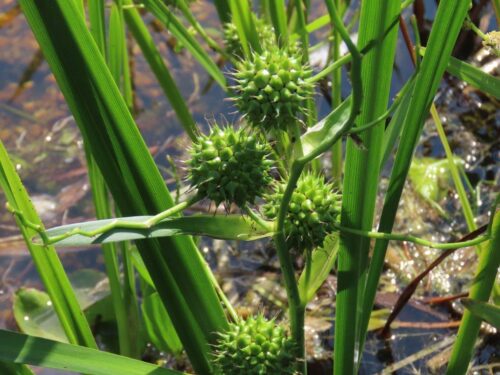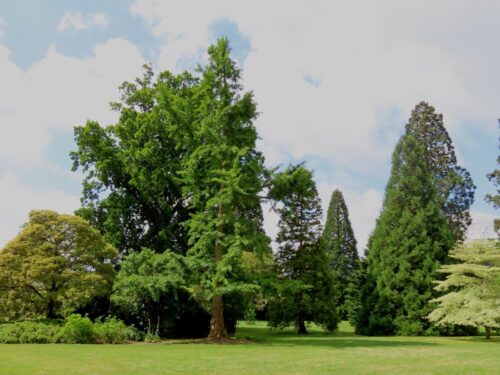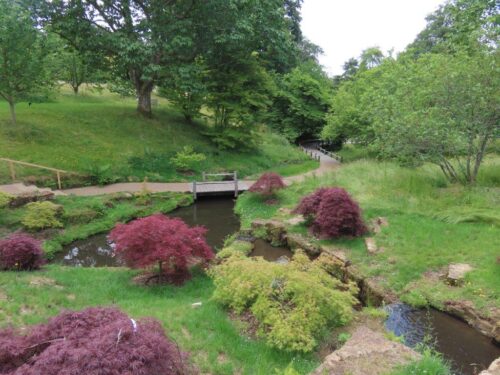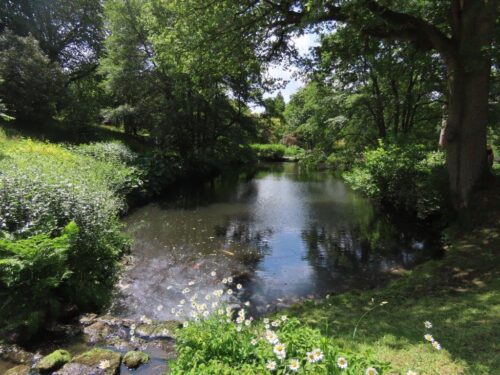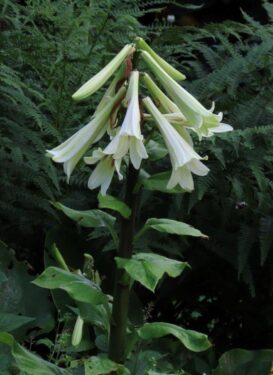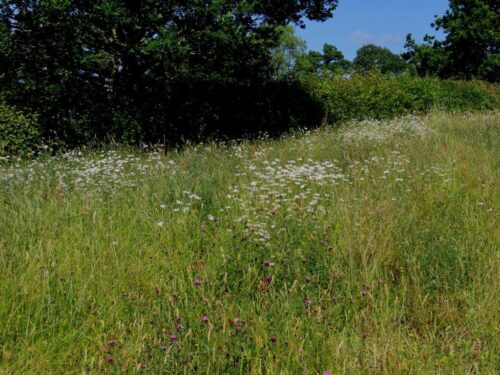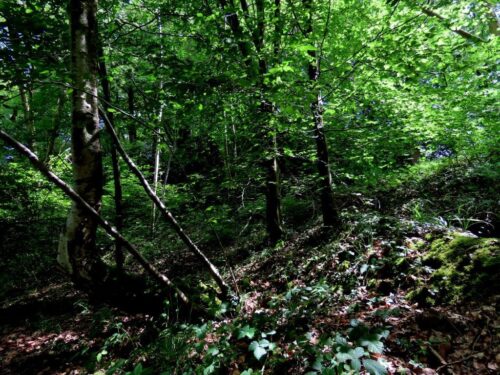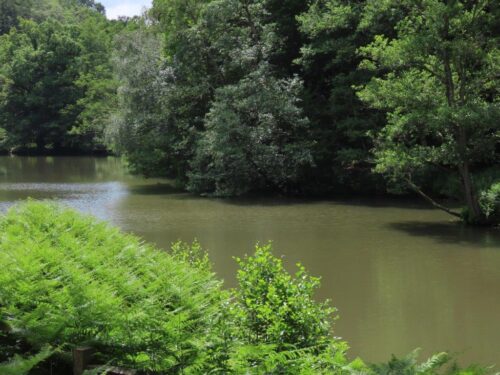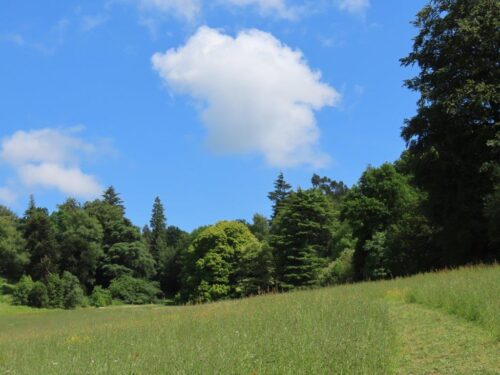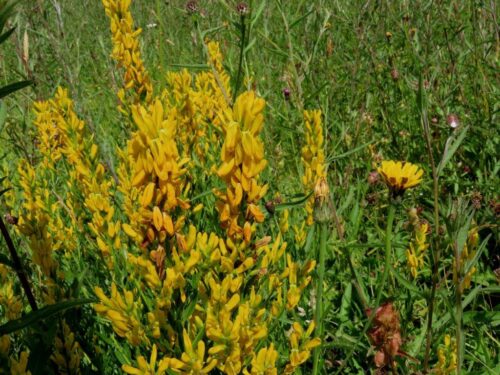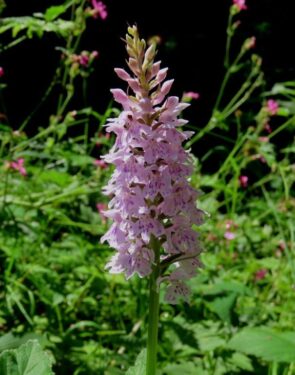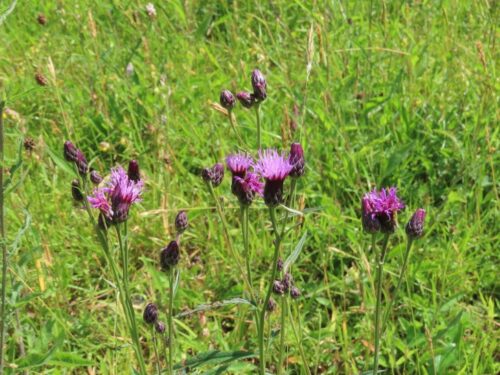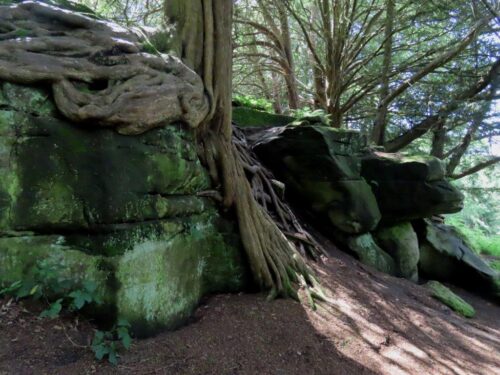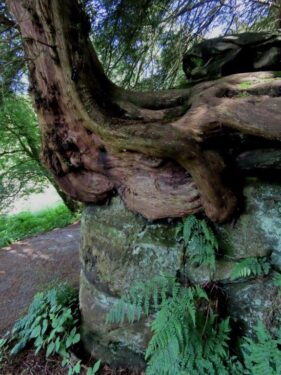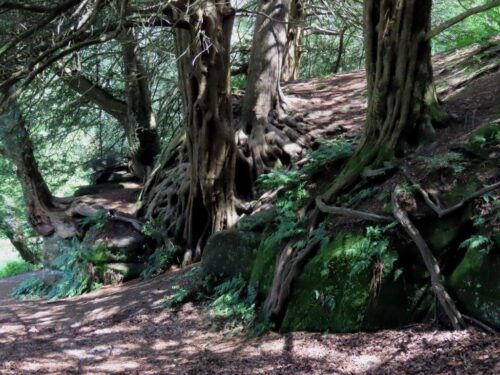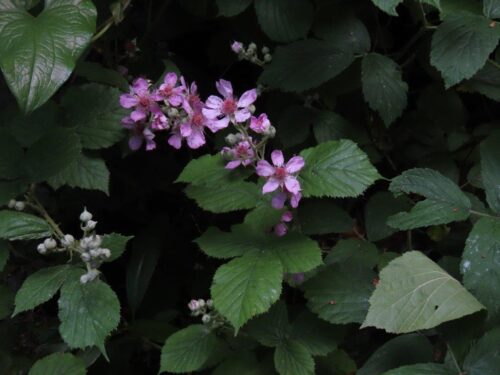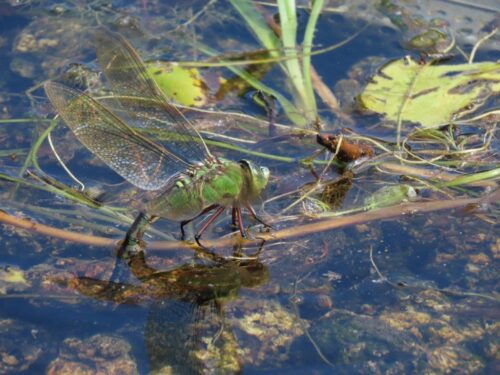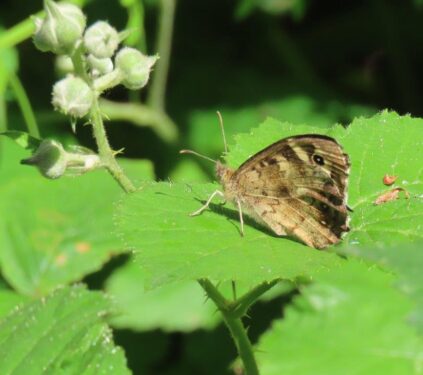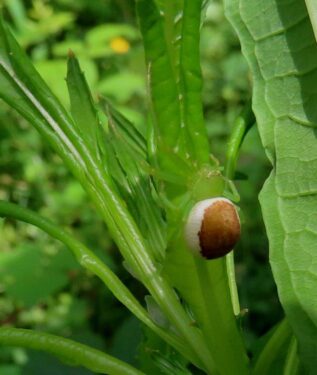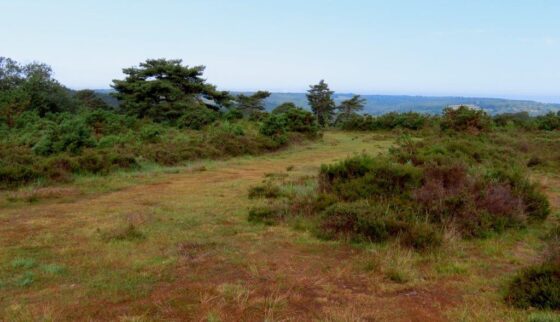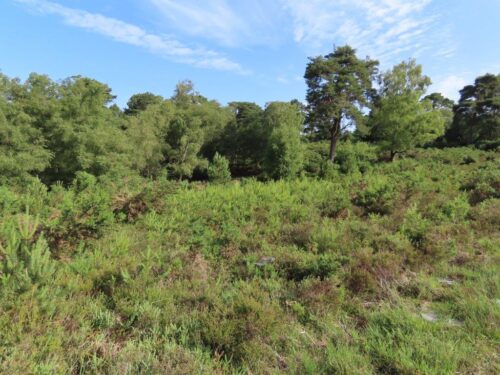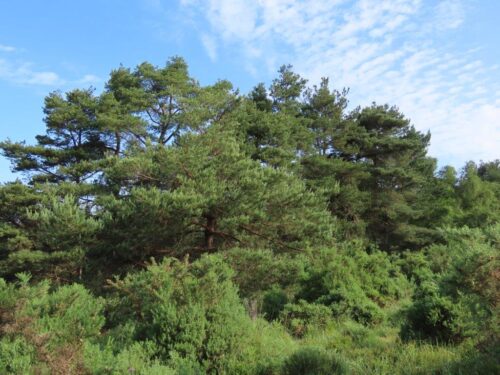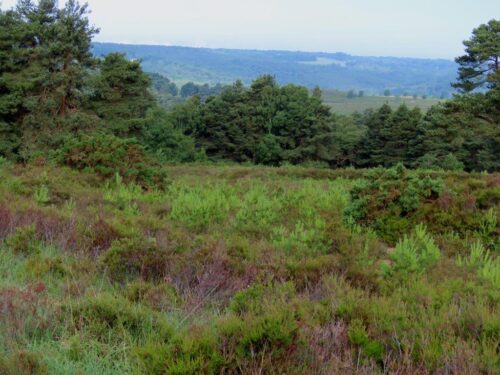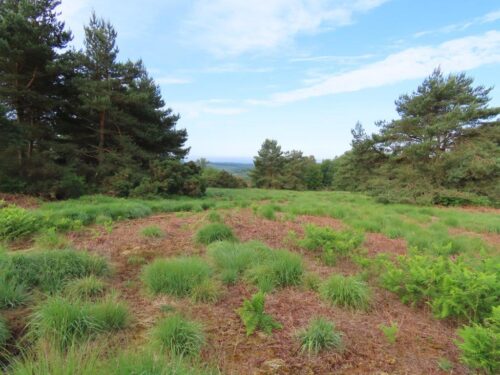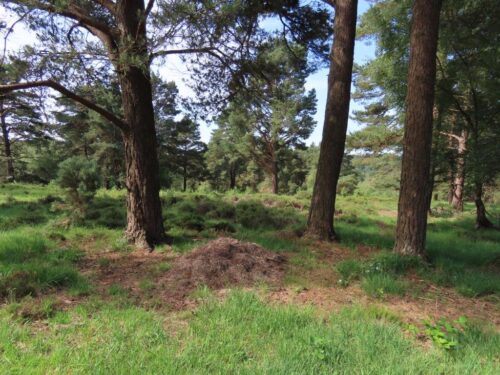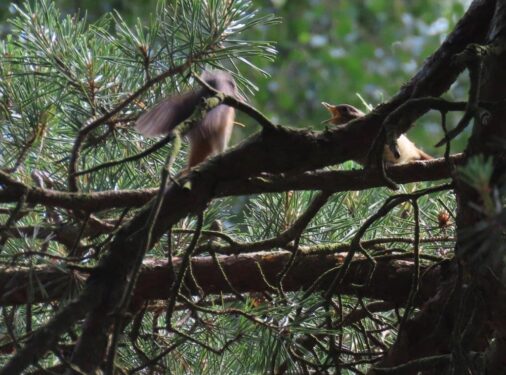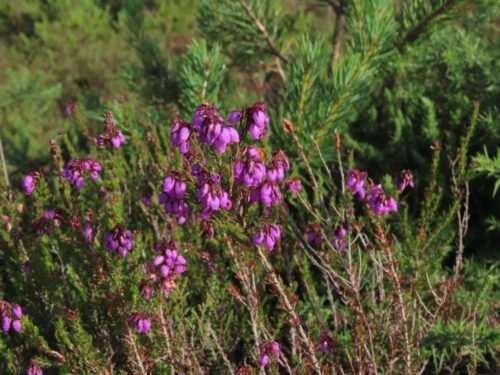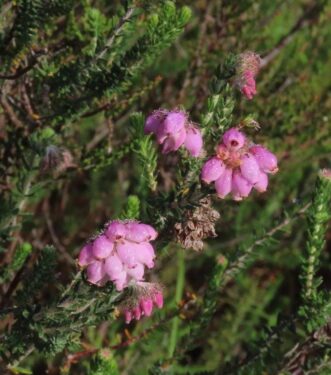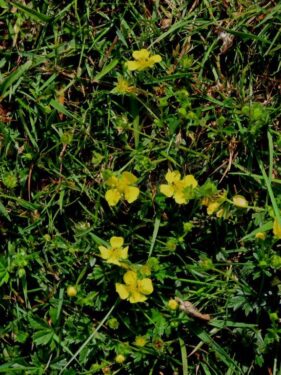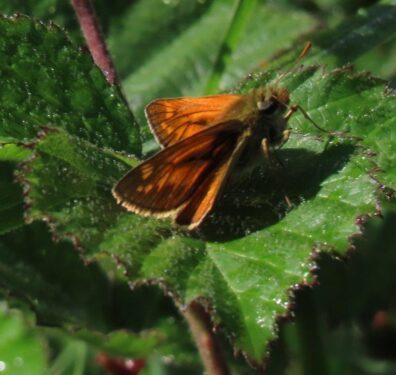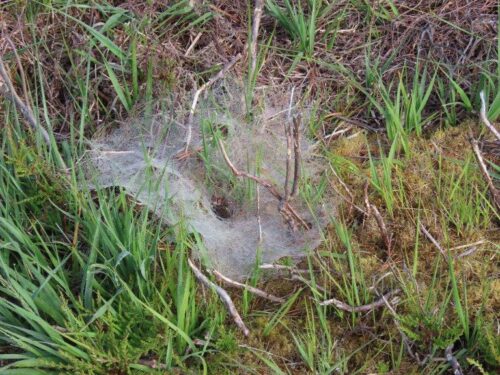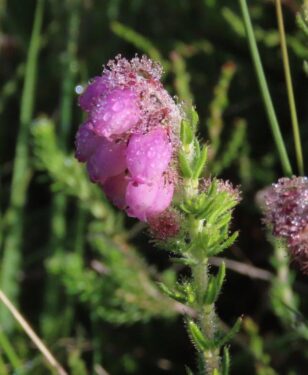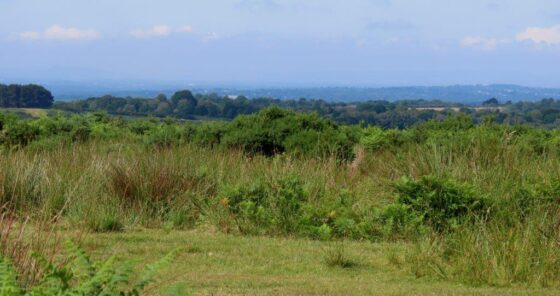Last week I had the opportunity to spend time in the Sussex Weald (one of surprisingly few times I have been to the area given I have been in Essex for nearly 40 years and the respective county boundaries are as close as only 30 miles) and to visit sites that have been on my radar for a long time.
First up it had to be Knepp Wildlands, an estate of 1400ha that is now the showpiece in the UK for large-scale nature restoration and rewilding since it was progressively taken out of intensive agricultural management from around the turn of the Millennium. That may have been barely two decades ago, but it felt more like the clock had been set back by centuries as I lost myself in the solitude and tranquility, ‘disturbed’ only by the ever-present birdsong and the bill-clapping greeting ceremonials of While Storks.
With reduced management intervention amounting mostly to low-density free-roaming cattle and deer …
… the hedge-lines and tree clumps from last century have started to creep out to instant effect, both for the landscape and the birds: Whitethroats and Chiffchaffs singing everywhere, with scattered Yellowhammers and Bullfinches, to a backdrop of Blackbirds and Song Thrushes, ample evidence in itself that this is not the pesticide-drenched wasteland of much of our modern agricultural scene.
Many insects also have considerable powers of dispersal, but unfortunately conditions were not especially amenable during my visit as a very heavy storm had swept through only hours before my arrival. And as I have said many times before, this spring and summer in the south-east at least have been pretty poor for insects, probably largely as a result of the larval-frying temperatures of last year.
But structurally, it is all looking very promising. The signs are clear: let the habitat develop and things will start to appear. And especially when the sun came out in late afternoon, plenty of Meadow Browns were on the wing, along with Marbled Whites and Large Skippers.
Plants of course are often slower to respond, as the dispersal of many species is by smaller increments and always more random than targeted. But again, it is early days, and there are undoubtedly many more flowers, along with lichens, fungi and all the rest, to be found than there were twenty years ago.
It must be tempting to try and ‘hurry up’ colonisation by active intervention (sowing, translocation, introduction etc) but there is considerable value in letting nature take its own course, not least because that is the cheaper option. But inevitably, it is the one deliberate addition, White Storks, that have raised Knepp’s profile, where pairs are now breeding in this country for the first time in hundreds of years.
They are conservationists’ marmite. Many would dispute the value of a feral population that doesn’t behave ‘normally’ ie it doesn’t migrate south for the winter, while others bemoan the likely effects of a generalist predator on beleaguered amphibian, reptile and insect populations. On the other hand, there were plenty of Toadlets hopping around into the new-formed puddles … and I certainly felt the visceral thrill of seeing, and especially hearing, these birds bill-clapping in the treetops, taking me back to many an encounter in southern and eastern Europe.
In the time I had wandering the Walkers’ routes, I covered only perhaps a fifth of the site. So much more there to get to know, and it can only continue to improve, especially when the Beavers start to transform their landscapes. Wholly inspiring, Knepp just goes to show how nature can and will, at least when we are gone, heal itself, and how we don’t need to wait for apocalypse for that to start – all that is needed is the resources, the land and most important the vision. A message for everyone, however small scale – a renatured lawn may be small, but enough of them can be as important as a Knepp.
Next day, it was Wakehurst Place, the ‘country home’ of Kew Gardens. Similarly huge, at its heart is another great hope for the future. Described as ‘the most biodiverse spot on Earth’. the Millennium Seed Bank keeps in cold storage samples of thousands of plants from all over the world. Sadly all too necessary, this is an Ark for the future, safeguarding the fruits of evolution from the ravages of ‘civilization’.
The plants of the UK are very well represented in this collection, and a good number are displayed growing very conveniently just outside in a series of habitat-themed parterres. Heaven for an inveterate photographer of our country’s special and iconic plants!
There are also extensive geographically-themed beds as one would expect in a true botanic garden, but many of them set within unmown ‘hay-meadow’ or ‘American prairie’ lawns…
… before merging almost imperceptibly into the ‘wildlands’ of this estate: semi-natural woodland, wetlands and grasslands.
The grasslands are especially impressive, with several species of orchid along with Dyer’s Greenweed and Saw-wort:
But what really excited me most was the Rock Walk, a gorge cut into the local sandstone, and colonised by now-ancient Yew trees, their limbs and roots enfolding the rock in such a close embrace, it is impossible to tell where rock becomes Yew, and vice versa.
Sadly, though, once again, despite a proliferation of insect-attracting flowers, there was rather little to see, except for Meadow Browns in the meadows (where else?!), Speckled Woods in the woods (…!), and female Emperor Dragonflies laying eggs in the water gardens, together with a lovely ‘cupcake’ spider Diaea dorsata.
Another fantastic (and this time sunny and hot) day, around a place I shall no doubt return to. How come I never knew about its delights before?
And for the final morning, it was up on to the higher tops of Ashdown Forest, specifically the Old Lodge Sussex Wildlife Trust reserve. First bird I heard was a singing Willow Warbler from the scrub, the first of many. And the only ones I have heard in this country this year – they have now pretty much been pushed out of the the desert-like Essex coastal region.
Add to those the singing Chiffchaffs, Garden Warblers, Woodlarks and Cuckoos, just to be there was like taking a long, hot, relaxing bath in birdsong, spiced further at the end with a newly-fledged family party of Common Redstarts.
Bell Heather and Cross-leaved Heath were in good flower among the fruiting Gorse and stubbornly-in-bud Common Heather, with Tormentil studding the grassy tracks.
Yet again the insects and other invertebrates were few and far between, with Small Heaths, Meadow Browns and Large Skippers the only butterflies….
… but as if by way of compensation, my early start, mainly to avoid the heat, saw the hairs of heaths and webs of spiders bedecked with the morning dew in a most attractive fashion.
Three sites in three days, all new ones to me, and I am sure not my last visit to the Weald.
